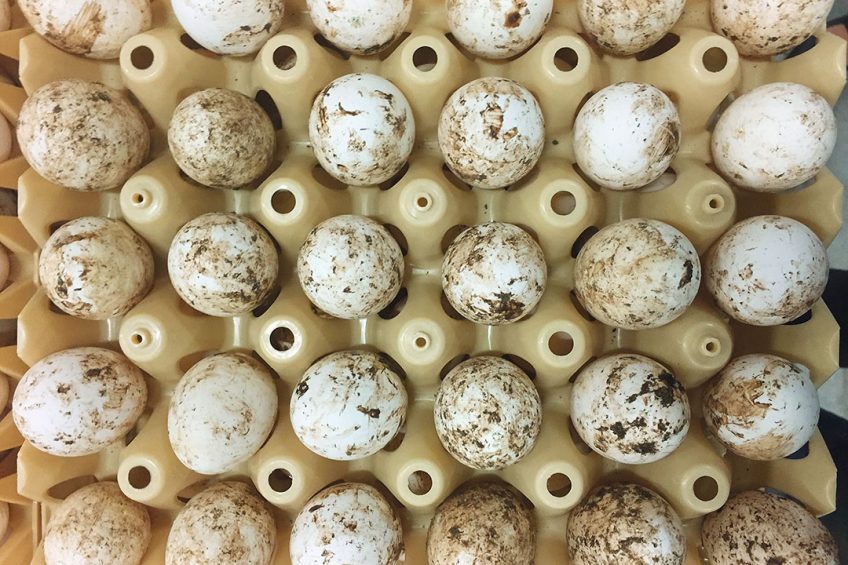How to prevent floor eggs?

Besides causing serious back ache, floor eggs cut into farm profits as well. You cannot sell floor eggs as first grade eggs, so the return is lower.
Dirty eggshells are not the only reason; the high percentage of floor eggs with hairline cracks is another factor. Preventing hens to lay on the floor is key, but there are no guarantees. Doing everything possible is not only a question of the timing of opening the nest boxes, it is also important to remove any floor eggs as soon as possible. Hence the back ache. If you do remove floor eggs quickly, the hens laying these floor eggs will be more prone to mimic the behavior of the ones that lay the eggs in the nest box.
6 risk factors for floor eggs explained
- Not enough training to move between levels: If the hens have not learned to move between different heights during rearing, they will not move between levels in an aviary system and will not go to the level where the nest boxes are located during lay. Thus, it is best that the housing systems in rearing and laying units are as similar as possible.
- Shady spots: If there are spots in the house that are dark or in a shadow, increase the light intensity or provide supplementary lighting. It is also useful to incorporate a dimming phase at the start of the day. Some laying hens feel a need to lay their egg before the light goes on. Those eggs land on the grids, often very close to the nest box.
- Nest boxes that are difficult to access: Birds have difficulty passing each other when looking for a nest. Resting hens can block the nest box entrances. Install more perches or a grill in front of the nest boxes, so that the hens are able to pass each other and see which nests are occupied.
- Attractive litter: A thick layer of litter is good for hens, but it also invites them to lay there. Preventing laying in the litter by using sufficient illumination and collecting any eggs there as quickly as possible. Disturb hens if they are laying floor eggs. Carry out multiple inspection rounds early in the morning with young flocks at start of lay.
- Draught in the nest boxes: You can check if there is a draught in the nest box by wetting a hand and holding it in there. If the space under the nest is cold, negative pressure can cause a draught. Hens do not like draughty conditions so they will go elsewhere. You can solve this problem with an airtight plate under the nest boxes. Incoming airflow is another possible cause of draughts.
- No water in front of the nest box: If there is no water available in front of the nest, the hens will be less attracted to them, and might lay their eggs elsewhere. Check regularly that the water supply is working as it should.













